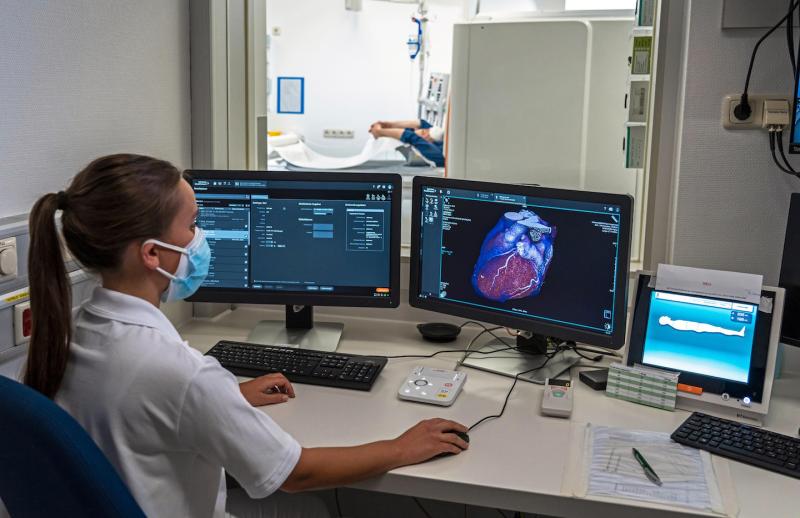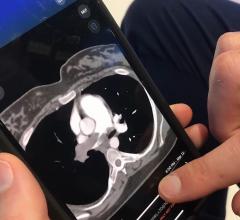Here are a few of the key takeaways on the new technologies that will impact cardiovascular and interventional medicine ...
Computed Tomography (CT)
Cardiac computed tomography CT systems use a series of X-ray images to create an image volume dataset that can be sliced or manipulated on any plane using advanced visualization software. This channel includes content on CT scanners, CT contrast agents, CT angiography (CTA and CCTA), CT perfusion, spectral CT (also called dual souce or dual energy CT), and interative image reconstruction software that can reduce dose and make lower-quality CT images diagnostic.

Here are two examples of artificial intelligence (AI) driven pulmonary embolism (PE) response team apps featured by ...
December 13, 2021 - HeartFlow Inc., the leader in revolutionizing precision heart care, today announced it has submitted ...
As medical advancements continue to push the boundaries of what is possible in the field of structural heart ...

December 3, 2021 — Here is the list of the most popular content on the Diagnostic and Interventional Cardiology (DAIC) m ...

November 1, 2021 — Here is the list of the most popular content on the Diagnostic and Interventional Cardiology (DAIC) ...

October 29, 2021 — A new guideline for the evaluation and diagnosis of chest pain was released this week that provides ...
October 20, 2021 — HeartFlow Inc. announced the commencement of the REVEALPLAQUE (A pRospEctiVe, multicEnter study to ...
October 14, 2021 — Cardiac computed tomography angiography (CTA) derived left atrium emptying fraction (LAEF) improves ...

October 6, 2021 — Data presented during the late-breaking science session at the European Society of Cardiology (ESC) 20 ...

October 6, 2021 – A new study published in Radiology: Cardiothoracic Imaging on cardiac imaging trends over a decade ...

The U.S. Food and Drug Administration (FDA) Sept. 30 cleared the world's first photon-counting computed tomography (CT) ...
September 27, 2021 — Zebra Medical Vision, the deep-learning medical imaging analytics company, announces its eighth U.S ...
September 22, 2021 — Test selection should be a shared decision between patient and physician rather than directed by ...

Outside of medicine, computer-generated virtual twins of real machines like cars or airplanes have been used in ...
July 21, 2021 — Artificial intelligence (AI) medical imaging vendors Viz.AI and Avicenna.AI have partnered to enable ...

 January 19, 2022
January 19, 2022






![Test selection should be a shared decision between patient and physician rather than directed by insurers’ test substitution policies, according to a statement published online in the Journal of the American College of Cardiology.[1] The statement summarizes the proceedings of a recent summit convened by the American Society of Nuclear Cardiology (ASNC), leadership of the American College of Cardiology Imaging Council, American Society of Echocardiography (ASE), Society of Cardiovascular Computed Tomography](/sites/default/files/styles/content_feed_medium/public/Cardiac_imaging_Nuclear_echo_CT_MRI.jpg?itok=XH9oijOU)
